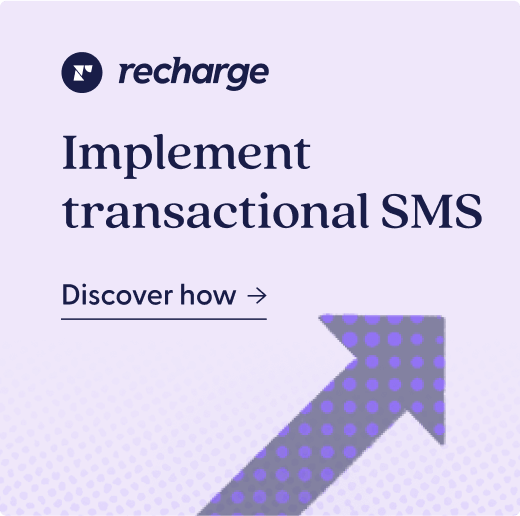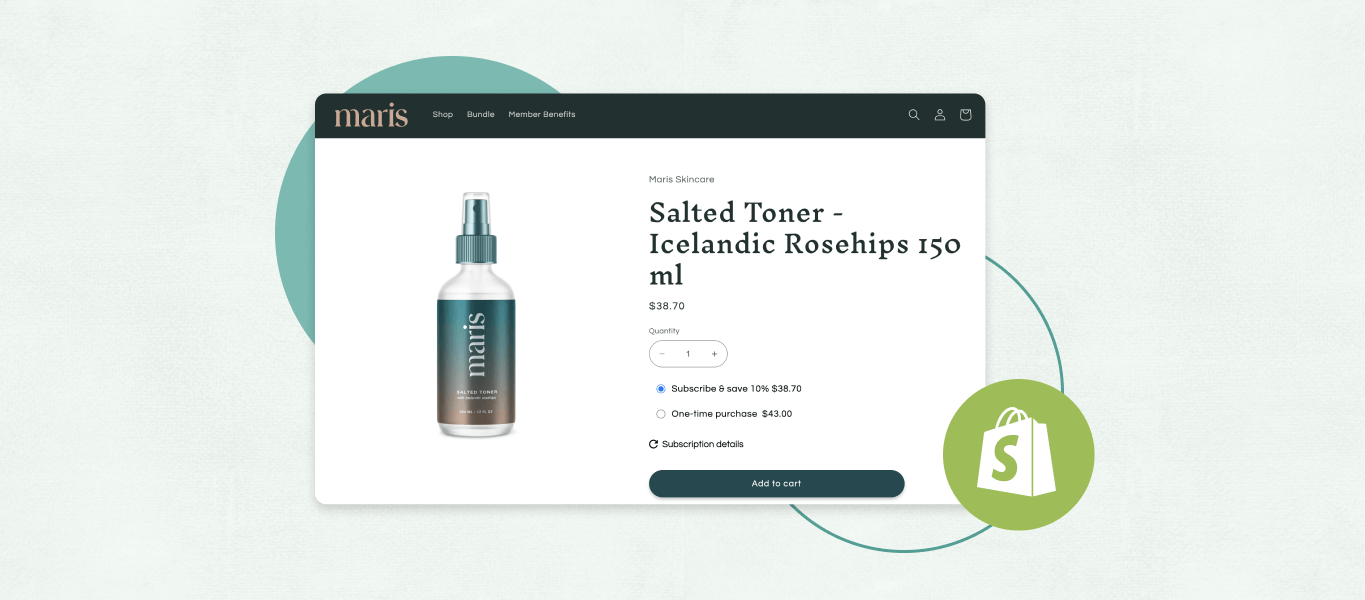To boost your bottom line in today’s world of rising customer acquisition costs, it’s key to focus on retaining your hard-earned customers. Reducing customer churn can set ecommerce businesses up to get even more value out of each shopper they acquire, ultimately increasing revenue and impacting scalability.
But customers churn for a variety of reasons, making it difficult for businesses to know where to begin. In this post, we’ll cover key strategies your store can utilize to reduce customer churn and improve the health of your business.
Key takeaways
- Customer churn, or customer attrition, is a key ecommerce metric that represents the percentage of customers that stop using a business’s products or services over a set period of time.
- By taking proactive steps to mitigate churn, businesses can benefit from increased customer lifetime value (LTV), revenue, and customer satisfaction.
- To reduce customer churn, focus on strategies like dunning, collecting customer feedback, and conducting regular churn rate analysis.
What causes customer churn?
One of the biggest challenges for ecommerce businesses today is identifying causes of customer churn. In order to answer this question, it’s important to break churn down into two different categories—active churn and passive churn—as each has different causes.
Passive churn
Passive churn, or involuntary churn, occurs when customers stop doing business with you without actively making the decision to do so. Typically, this is caused by issues like a credit card expiring or payment details becoming out of date.
Active churn
Active churn, or voluntary churn, is when customers make a conscious decision to stop doing business with you. This lack of customer satisfaction can be attributed to a vast array of factors, including:
- Budgetary reasons
- Dissatisfaction with product quality
- Poor customer service
- An inflexible order management process
- Not enough product offerings that match the customer’s needs
- A confusing or cumbersome overall shopping experience
- Competitive pricing or promotions from competitors
Because the causes of active churn are so unique to individual businesses, it’s key to identify the unique churn drivers for your business so you can work to resolve them as quickly as possible.
So—how do you identify those churn drivers and retain customers more effectively?
Using data analysis for churn prevention
Reducing customer churn starts with digging into the data. To learn more about preventing them from churning, you’ll want to pinpoint:
- Who is typically churning
- At what point they are churning in the customer journey
- Any feedback they can provide to add context to the data you gather
Identify at-risk customers to segment your customer retention strategies and prevent customer churn before it occurs. For example, if you find that your new customers typically leave your business after the third order with you, send those shoppers a special offer or a personalized product recommendation just before their second order so they are more likely to stick with you over time.
Note that while churn is important, a single metric won’t tell the full story of the health of your business. Always consider your customer churn rate in the context of other key metrics, like LTV, AOV, MRR, repeat purchase rate, and more. Measure it over time to identify larger patterns and seasonal trends in behavior.
5 key strategies to tackle churn reduction
A powerful churn reduction strategy should incorporate both passive and active churn mitigation techniques. It should also be both proactive and reactive to be most effective for different use cases.
Looking for a place to start? Implement the strategies below.
1. Tackle passive churn with dunning
When passive churn occurs or is about to occur, customers need to know as soon as possible. That’s where dunning comes in. In this process, a company communicates to at-risk customers reminding them to update their payment details before churn occurs. Here, it’s critical to leverage automations for efficiency and accuracy.
With Recharge, you can deploy built-in dunning features to automatically mitigate passive churn. For example, you can configure your settings in Recharge to automatically retry orders at an interval of your choosing, or use RechargeSMS to send customers a text message alert if their credit card fails.
2. Prioritize proactive customer service
As you begin to identify patterns in your customer churn over time, you can channel your learnings into insights for your Customer Success team. Make sure they’re equipped with all the valuable takeaways they need to resolve any pain points, and allow them to prepare ahead with responses and action plans for key customer issues.
3. Stay connected with customers after the initial purchase
Customer engagement shouldn’t end after purchase. To keep them with your business for the long haul—particularly if you offer subscriptions—you need to form a relationship with them, which means engaging with them meaningfully over time.
You can do this in a variety of ways depending on what works best for your unique customer base and products. For example, you might choose to launch a brand community that offers meaningful and valuable content at no charge to members. Or, you might opt to regularly respond to and repost customers’ social media content that features you.
4. Center the voices of your customers
Metrics alone won’t tell the full story of why your customers are churning. To effectively retain your valuable customers, you need to center their voices—which means regularly soliciting their feedback and putting it to use.
One way to accomplish this is sending simple post-purchase surveys that ask shoppers if they are satisfied with their purchase. These surveys only take a few seconds to submit, but can give you more information to supplement any KPIs you’re tracking.
To gain a better picture, you can conduct more in-depth customer interviews that ask shoppers more specific questions about the products they purchase, their interactions with your website, and more. Consider incentivizing customers to complete these interviews with exclusive benefits, like a discount, to encourage participation.
Social media is also a great way to keep a pulse on what shoppers are saying about you—good or bad. Make sure that your Customer Support and Social Media teams connect regularly to share their learnings.
5. Offer personalized incentives
To keep customers with your business over time, you must offer value to them beyond just your products and services. Many customers want that value to come in the form of time-savings, specifically through personalization.
By sending customers tailored incentives, product recommendations, rewards, or discounts, you demonstrate that you understand their preferences and are invested in keeping them with your business. This can go a long way in encouraging brand loyalty and repeat purchases.
Keep your existing customers happy & reduce churn with these strategies
Churned customers are a massive missed opportunity for any ecommerce business. To reduce customer churn rate for your business, leverage an array of strategies to reduce both active and passive churn. By being proactive, not just reactive, about your churn reduction efforts, you can benefit from increased customer loyalty, improved revenue, and more sustainable business growth over time.



